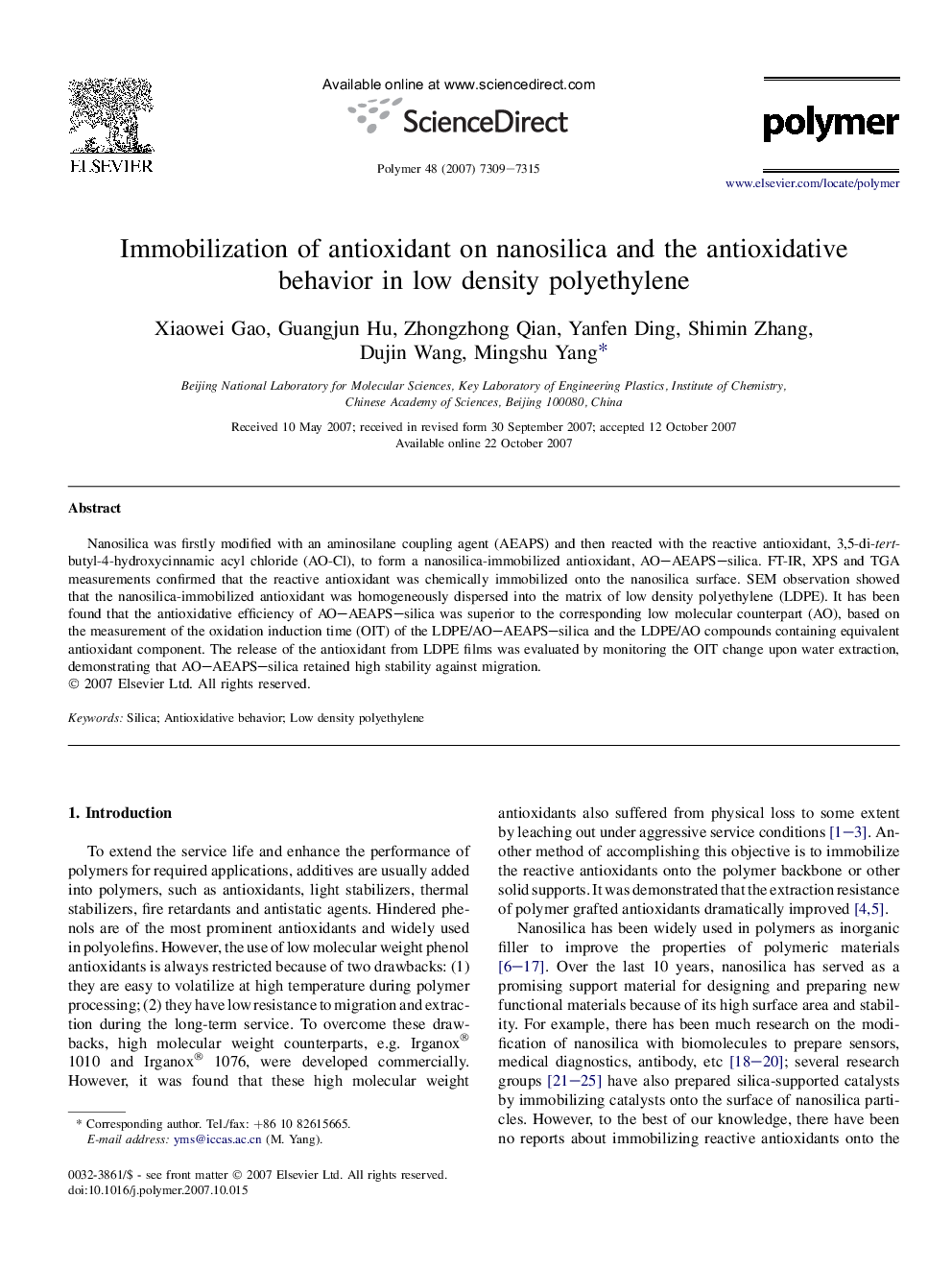| Article ID | Journal | Published Year | Pages | File Type |
|---|---|---|---|---|
| 5185698 | Polymer | 2007 | 7 Pages |
Nanosilica was firstly modified with an aminosilane coupling agent (AEAPS) and then reacted with the reactive antioxidant, 3,5-di-tert-butyl-4-hydroxycinnamic acyl chloride (AO-Cl), to form a nanosilica-immobilized antioxidant, AO-AEAPS-silica. FT-IR, XPS and TGA measurements confirmed that the reactive antioxidant was chemically immobilized onto the nanosilica surface. SEM observation showed that the nanosilica-immobilized antioxidant was homogeneously dispersed into the matrix of low density polyethylene (LDPE). It has been found that the antioxidative efficiency of AO-AEAPS-silica was superior to the corresponding low molecular counterpart (AO), based on the measurement of the oxidation induction time (OIT) of the LDPE/AO-AEAPS-silica and the LDPE/AO compounds containing equivalent antioxidant component. The release of the antioxidant from LDPE films was evaluated by monitoring the OIT change upon water extraction, demonstrating that AO-AEAPS-silica retained high stability against migration.
